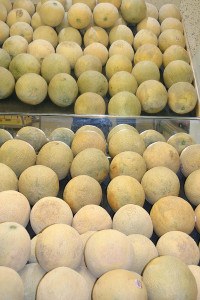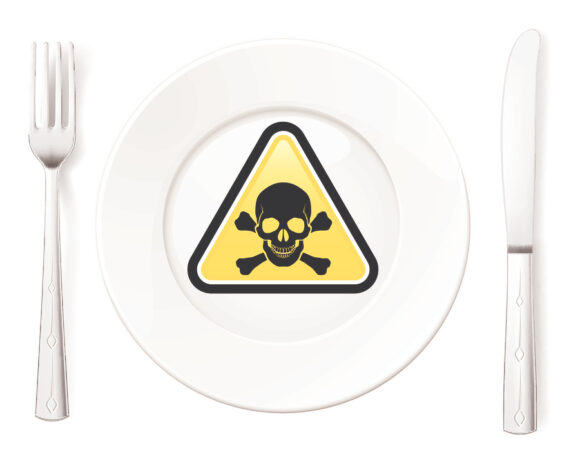One of the most heavily litigated insurance issues in coverage liability cases related to outbreaks of widespread foodborne illnesses is the determination of occurrence where multiple people in multiple states are affected by a contaminant that seems to stem from a single source, according to a Chicago-based attorney who specializes in such cases.
Unfortunately for insurance carriers and insureds, judicial decisions in these cases are not necessarily consistent across the country, said Jean Golden, a partner in the law firm of Cassiday Schade LLP in Chicago.
The U.S. Centers for Disease Control (CDC) estimates that around 1 in 6 (or 48 million people) gets sick, 128,000 are hospitalized, and 3,000 die of foodborne diseases annually in the United States.
In a widely publicized case earlier this year, an outbreak of salmonella linked by the U.S. Food and Drug Administration to tainted cantaloupes from one Indiana farm sickened at least 270 people in 26 states and killed three people in Kentucky.
In another instance this year, the CDC reported that 29 individuals in 11 states were infected with E. coli O26 in an outbreak linked to raw clover sprouts served at Jimmy John’s restaurants. No deaths were associated with that outbreak.
A big problem for courts, and insurers, is how to assess the number of occurrences that are generated by one outbreak, Golden said during a podcast sponsored by A.M. Best.
If an E. coli outbreak affects 14 people in six states, are there 14 occurrences? Golden asked. Are there a thousand occurrences if a thousand people are affected?
To address the issue of occurrence, which Golden said is defined in most commercial general liability policies as “an accident, including continued or repeated exposure to substantially the same condition,” courts generally rely on one of three types of tests.
The cause test generally looks to the source for the cause of the injury and the effects test looks to the number of injuries, Golden said.
“A few states apply what’s called the unfortunate events test, which looks for the event or events for which the insured is being held liable,” she added.
Golden cited an Illinois case which involved contaminated onions that had been served at a restaurant over the course of three days.
“The court held that each serving was a separate occurrence under the cause test, implying but not directly stating, that there was negligence by the insured each time the restaurant cooked the onions for a customer,” she said.
In another case, heard in the Northern District of Illinois, “a company that produced ground beef was sued after a man and his granddaughter became sick. The man had eaten a hamburger contaminated with E. coli. He became ill then gave the virus to his granddaughter through physical contact with her,” Golden explained. “She had what’s called a secondary infection.”
Applying the cause test, the court found that both injuries stemmed from a single batch of tainted meat, resulting in a single occurrence.
Golden also described a 2007 New York court decision in which the unfortunate event test was applied in a case “30 employees of a microwave popcorn packaging plant suffered respiratory injuries from an ingredient in butter flavoring.” In that case, the court found there were 30 separate occurrences.
Whether or not property damage occurs when a tainted product is incorporated into another product — contaminated peanuts in a candy bar, for example — is an additional coverage issue that may arise in these types of contamination cases. This is especially true when the secondary product, which is now tainted, is distributed on a widespread basis to other vendors or to consumers, Golden said.
“Courts will generally find that a product that has been compromised by a tainted ingredient falls within the definition of property damage if the ingredient cannot be removed without altering the product,” she explained.
Multiple Claimants, Multiple Jurisdictions
Litigating foodborne illness cases can be challenging because the product in question often “is disseminated over a number of states to multiple claimants who are not going to be amenable to one court’s jurisdiction,” Golden said. “The problem that you’re confronted with as an insurer in that situation is that you get a ruling or potentially have access to a ruling in one jurisdiction that won’t necessarily preclude a claimant in another jurisdiction from seeking relief against you in another state or federal court.”
An insurer presented with a case involving multiple claimants in multiple jurisdictions “has to consider how to protect itself from collateral claims,” Golden said.
For instance, the carrier may want to consider whether the jurisdiction in which it is planning to litigate is the most appropriate forum.
“It must analyze whether another forum, albeit inconvenient, might offer more protection,” Golden said.
Another consideration is “whether there are other parties in the lawsuit that can represent the claimants’ interests adequately.”
In a situation in which multiple lawsuits against the insured in different federal courts are consolidated to be heard before a multidistrict litigation panel, the insurer “may want to consider filing a declaratory action in that jurisdiction also,” Golden added.
Aside from developing first party types of coverages to better minimize the unknown coverage risks in this area, one important “thing insurers can do to help minimize their risks in this area is to implement effective underwriting. Look at the insured’s business [and] compare it to the trends in this area and studies that are coming out with respect to contamination,” Golden said.
Multistate Foodborne Illness Outbreaks Investigated in 2012
- Spinach and Spring Mix – Escherichia coli O157:H7 Infections
- Peanut Butter – Salmonella Bredeney
- Frescolina Marte Brand Ricotta Salata Cheese –Listeria monocytogenes
- Hedgehogs – Salmonella Typhimurium
- Mangoes – Salmonella Braenderup
- Cantaloupe – Salmonella Typhimurium and Newport
- Ground Beef – Salmonella Enteritidis
- Live Poultry – Salmonella Hadar
- Live Poultry – Salmonella Montevideo
- Multistate Outbreak – Escherichia coli O145 Infections
- Live Poultry – Salmonella Infantis, Newport, and Lille
- Dry Dog Food – Salmonella Infantis
- Raw Scraped Ground Tuna Product – Salmonella Bareilly and Salmonella Nchanga
- Small Turtles – Salmonella Sandiego, Salmonella Pomona, and Salmonella Poona
- Raw Clover Sprouts at Jimmy John’s Restaurants -Escherichia coli O26
- Restaurant Chain A – Salmonella Enteritidis
Source: CDC
Was this article valuable?
Here are more articles you may enjoy.


 What The Return of California’s ‘Death Discount’ Means for Litigation
What The Return of California’s ‘Death Discount’ Means for Litigation  First Brands Judge Approves Examiner to Probe Fraud Allegations
First Brands Judge Approves Examiner to Probe Fraud Allegations  Singer’s Elliott Sued by PE Firm in Escalating Fight Over Money
Singer’s Elliott Sued by PE Firm in Escalating Fight Over Money  Insurance Payments Now at $22.4B From LA Wildfires One Year Ago
Insurance Payments Now at $22.4B From LA Wildfires One Year Ago 